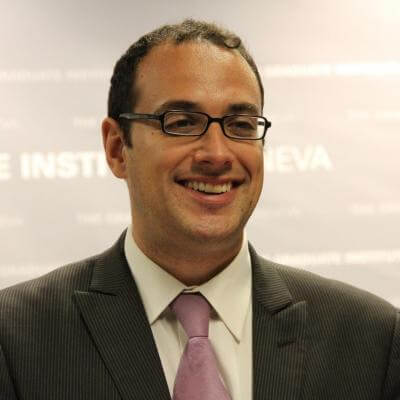Depletions: The Future of Population Decline and Human Rights
The world is gradually moving towards subpar fertility. India and China – long considered fertility “hot spots” powering exponential population growth – have begun to rapidly cool towards below-replacement-level fertility. The role played by high incidence of disease burden linked to sexual and reproductive health (SRH); aggressive antinatalist population control and family planning policies; aging population; fertility decline and out-migration on account of rapid socio-economic stress; population displacement due to conflicts and now increasingly climate change is rapidly shaping the emerging face of population depletions around the globe.
The idea of depletion or the amount by which something is lessened offers a unique conceptual inflection to the urgent need for understanding the future of both human population and human rights. The notion of depletion makes us attentive to how in different national contexts: (1) fertility and consequently population depletions produce a climate of demographic anxiety and investments in governance modalities typified by the concept of “demographic security”, (2) state-supported reproductive demands, including pronatalist and/or antinatalist policies, may adversely impact human-rights-based approaches to sexual and reproductive health, bodily autonomy and choice. This, in turn, risks further aggravating gender inequality and social injustice and accelerates the depletion cycle.
The United Nations Population Fund (UNFPA) has already sounded alarm on how political demands for more children and the consequent violation of women’s rights are actively justified by governments in terms of low fertility and demographic insecurity. For example, a targeted push to increase birth rate is gradually becoming common across the Eastern European region. Historically target-based family-planning initiatives – sponsored by multilateral bodies as a developmental panacea for the countries of the South – resulted in egregious human rights violations. Principally this entailed imposition of draconian measures ranging from forced sterilisation to mandated one-child policies.Target-based family-planning initiatives – sponsored by multilateral bodies as a developmental panacea for the countries of the South – resulted in egregious human rights violations. More recently, under the rubric of demographic security, countries in the Eastern Europe and Central Asia (EECA) region have begun pushing target-based pronatalist policies at the expense of SRH rights. There is an urgent need to amplify UNFPA’s concerns at the highest multilateral levels. For instance, the important focus on economic and social rights within UN Human Rights (OHCHR) could be further expanded to address fertility decline on account of postponement of the age at first birth, due partly to economic uncertainty and partly to sociopolitical arrangements such as curtailed childbearing in a climate of political uncertainty exacerbated by rapid out-migration. These structural issues importantly contribute to the phenomena described as “lowest-low fertility”. This is particularly true for a number of established low fertility “hot spots” around the world such as the EECA region. While demographers and public policy analysts have identified migration, socio-economic factors, aging population, to name a few, as leading causes of demographic decline in the EECA region, little or no work has gone into understanding the high incidence of infertility and associated SRH complications with profound human rights implications. The EECA region has seen some of the highest levels of secondary infertility – the inability to have a child after first-order birth – which, emerging research suggests, may be due to the high incidence of sexually transmitted infections (STIs), unsafe abortions and delayed childbearing in many Eastern European countries.

This contemporary moment of fertility depletion can be best contextualised drawing on French thinker Michael Foucault’s work Security, Territory, Population, where he shows how population transformations brought about by growth, decline and movement (of populations) in Europe became a state subject from about the second half of the eighteenth century. This, according to him, facilitated a certain form of governmentality that turned the management of populations into a state subject leading to the emergence of practices and interventions such as social medicine and demography. In other words, the current moment of fertility depletion around the world is part of a longer imbricated history. What makes this contemporary iteration of a seemingly long and intractable problem particularly important is the urgent need to identify how a focus on total fertility rate – 2.1 live births per woman in the 15–49 age cohort – is becoming a governance and policy concern producing elevated risk of depletion in rights-based imperatives. As anthropologists and critical gender studies scholars Michele Rivkin-Fish and Tatsiana Shchurko have shown, the Russian Federation and its client states like Belarus deploy “technological resources, surveillance power, and tactics of persuasion” to shape pronatalism whilst increasing levels of “medical manipulation” is pressed into service to foist “compulsory motherhood” that denies a woman “agency over her physical, reproductive being”.
Emerging demographic anxieties focused on fertility depletion are likely to engender noxious consequences for both sexual and reproductive rights as well as human rights more generally Emerging demographic anxieties focused on fertility depletion are likely to engender noxious consequences for both sexual and reproductive rights as well as human rights more generally. More academic research is urgently needed to undergird policy-led efforts, such as those of WHO and UNFPA to predict demographic shifts, understand their impact and develop evidence-based policy responses rooted in human rights. As reproductive lives and destinies of women and men get shaped by emerging governance narratives preoccupied by securitisation rather than human rights concerns, academic and policy inaction risks overseeing politically inflected changes to relatively stable concepts of population and demography. A lack of evidence-based interrogation of emerging biopolitical concerns risks producing differential and adverse human rights and SRH outcomes.
PODCAST: Human Rights and the International Criminal Court with Paola Gaeta
Global Challenges n° 11 – The Uncertain Future of Human Rights. With Dominic Eggel and Marc Galvin (Research Office – The Graduate Institute, Geneva)
PODCAST: The Universality of Human Rights with Huaru Kang
Global Challenges n° 11 (The Uncertain Future of Human Rights). With Dominic Eggel and Marc Galvin (Research Office – The Graduate Institute, Geneva)
PODCAST: Human Rights and Social Media with Stefania Di Stefano
Global Challenges n° 11 – The Uncertain Future of Human Rights. With Dominic Eggel and Marc Galvin (Research Office – The Graduate Institute, Geneva)
PODCAST: Human Rights versus Nature and Animals Rights? with Anna Ploeg
Global Challenges n° 11 – The Uncertain Future of Human Rights. With Dominic Eggel and Marc Galvin (Research Office – The Graduate Institute, Geneva)
PODCAST: Human Rights and Business, with Jérôme Bellion-Jourdan
Global Challenges n° 11 – The Uncertain Future of Human Rights. With Dominic Eggel and Marc Galvin (Research Office – The Graduate Institute, Geneva)
PODCAST: Human Rights Narratives with Tomas Morochovic
Research Office – Graduate Institute, Geneva.
VIDEO: Human Rights and Humanitarian Law in the 21st Century, with Gloria Gaggioli
Global Challenges n° 11 – The Uncertain Future of Human Rights – The Graduate Institute, Geneva
TIMELINE: Major International Human Rights Treaties
The Universal Declaration was the first detailed expression of the basic rights and fundamental freedoms to which all human beings are entitled.
The Convention on the Prevention and Punishment of the Crime of Genocide was adopted by the UN in an effort to prevent atrocities, such as the Holocaust, from happening again. The Convention defines the crime of genocide.
The Convention relating to the Status of Refugees protects the rights of people who are forced to flee their home country for fear of persecution on specific grounds.
The Discrimination (Employment and Occupation) Convention (No. 111) of the International Labour Organization prohibits discrimination at work on many grounds, including race, sex, religion, political opinion and social origin.
The International Convention on the Elimination of All Forms of Racial Discrimination (ICERD) obliges states to take steps to prohibit racial discrimination and promote understanding among all races.
The International Covenant on Economic, Social and Cultural Rights (ICESCR) protects rights like the right to an adequate standard of living, education, work, healthcare, and social security. The ICESCR and the ICCPR (below) build on the Universal Declaration of Human Rights by creating binding obligations for state parties.
Human rights protected by the International Covenant on Civil and Political Rights (ICCPR) include the right to vote, the right to freedom of association, the right to a fair trial, the right to privacy, and the right to freedom of religion. The First Optional Protocol to the ICCPR creates a mechanism for individuals to make complaints about breaches of their rights. The Second Optional Protocol concerns abolition of the death penalty.
Under the Convention on the Elimination of All forms of Discrimination against Women (CEDAW), states must take steps to eliminate discrimination against women and to ensure that women enjoy human rights to the same degree as men in a range of areas, including education, employment, healthcare and family life. The Optional Protocol establishes a mechanism for making complaints.
The Indigenous and Tribal Peoples Convention (No. 169) of the International Labour Organization aims to protect the rights of Indigenous and tribal peoples around the world. It is based on respect for the right of Indigenous peoples to maintain their own identities and to decide their own path for development in all areas including land rights, customary law, health and employment.
The International Convention on the Protection of the Rights of All Migrant Workers and Members of Their Families aims to ensure that migrant workers enjoy full protection of their human rights, regardless of their legal status.
The Convention on the Rights of Persons with Disabilities aims to promote, protect and ensure the full and equal enjoyment of all human rights by persons with disability. It includes the right to health, education, employment, accessibility, and non-discrimination. The Optional Protocol establishes an individual complaints mechanism.
This Declaration establishes minimum standards for the enjoyment of individual and collective rights by Indigenous peoples. These include the right to effectively participate in decision-making on matters which affect them, and the right to pursue their own priorities for economic, social and cultural development.
This Declaration asserts that everyone has the right to know, seek and receive information about all human rights and fundamental freedoms and should have access to human rights education and training.
Based on the information produced by the Australian Human Rights Commission















